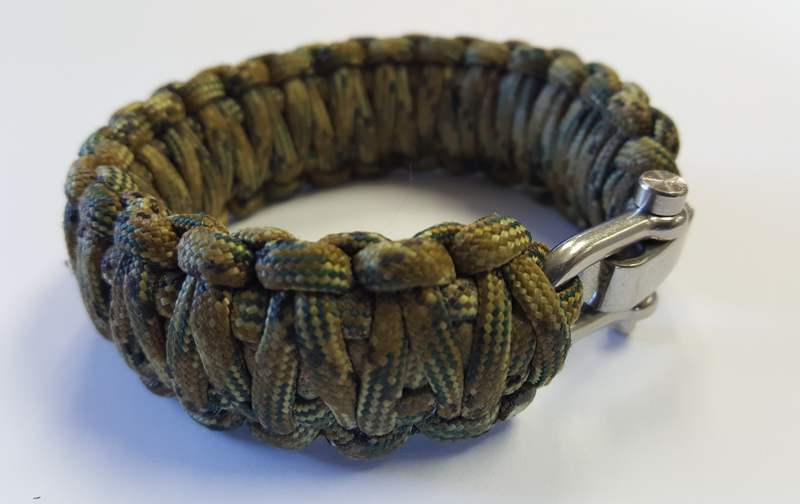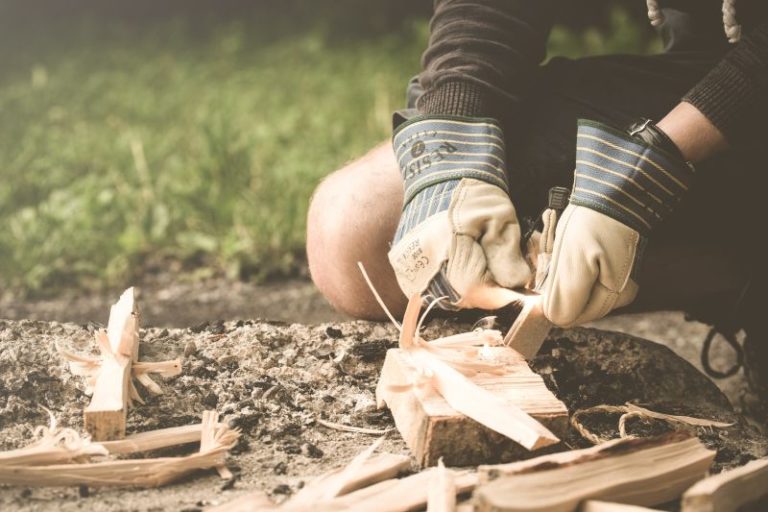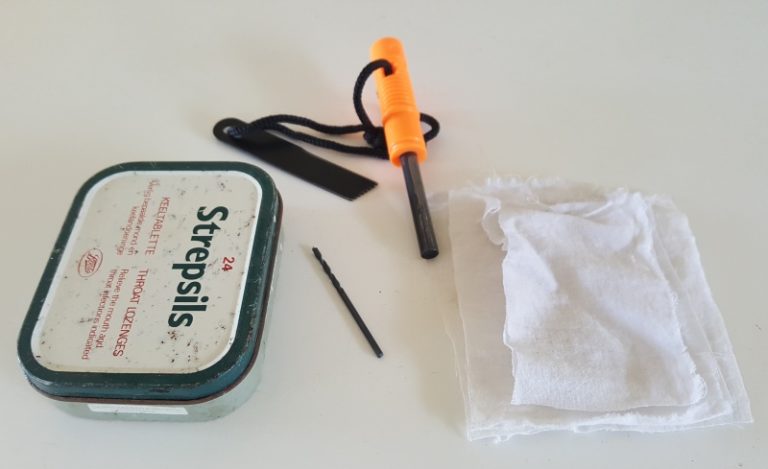How To Make A Survival Bow
I get commissions for purchases made through links in this post. View our Affiliate Disclaimer.
Making a survival bow is not only a challenge that survivalists and preppers should know and master, but can also be a fun activity!
The key to making a successful survival bow and arrows is twofold. Firstly, to find the right materials (usually wood) in the wilderness. Secondly, having the skills and know-how to shape them into a strong and reliable hunting or self-defence tool.
Choosing the Right Wood for the Job
This is the first and most important task in creating a survival bow. In most instances, any good hard wood will do for making a survival bow. The type of wood depends where in the world you live. In my part of the world, wood from the red bushwillow(Combretum appiculatum) has been used with some success. It is, however, difficult to find branches long and straight enough. The San bushmen used wood from Grewia spp. , commonly known as the raisin bush or “rosyntjiebos” family, for making both bows and arrows.
This leads to another skill you should develop as a prepper or survivalist – learn the trees in your part of the world. Learn their wood characteristics, their uses for man and animals. Find out whether they can provide you with food or whether they are toxic and should be avoided, make good firewood or building materials, etc. But this is a topic for another post.
Testing Wood for Suitability
- Select a branch from the tree about 1.3cm thick (about half an inch)
- Bend the branch a little bit and let it go. It should snap back into place quickly.
- Bend the branch into the shape of a ‘C’ and test whether it does so easily and if it stays intact.
- Intentionally break the branch. If the branch snaps, then the quality is not good enough. If it breaks in a way that bends the fibrous internal strands of the branch then it is a good choice for making your bow.
Once you find the right wood, you need to find a sapling or a branch that has the following characteristics:
- 5 metres long (about 5 feet)
- 10 cm thick
- No twists
- No large knots
- Free of cracks
- Even diameter through the length of the wood
Shaping your Survival Bow
It’s important to understand and work with the natural shape and tendencies of the wood. The branch will have its own way of moving and bending and when learning how to make a survival bow, you need to familiarize yourself with the natural tendencies of the chosen wood.
To find the natural bend of the branch, place one end of the branch on the ground and place your hand on the other end. Gently hold the top of the branch and push on the center. The branch will rotate until you find the natural bend. The inner part of that bend is called the belly of the curve and outer part of the bend is called the back.
Once you found the natural curve of the branch, mark three inches on either side of the center of the branch. This will be the handhold area of the bow.
Taper The Survival Bow
Taperin of the survival bow involves shaving wood off the sides of the bow to taper it towards each end. You can also carve out an area in the middle of the bow to make it fit your hand better. Remember to only take wood off the sides of the bow – not the back or belly in this process.
Tiller The Bow
The next step is to tiller the survival bow. Place one end of the branch on the ground and hold the other end and push the handle of the branch. Anywhere along the end of the branch closest to the ground does not bend easily, use a sharp knife to whittle away the wood from the belly until the right bend is achieved.
Flip the branch to shape the curve of the other end.
It is critical to strip away wood from the belly side of the bow only. Never strip from the back as this will compromise the strength of the branch and could cause the bow to break.
Be sure to remove any wood from the belly slowly, rechecking the curve often to ensure the shape is correct. The ends of the bow and the handhold area should bend very little. The final result should be a bow on which both ends bend evenly to form the shape of a parabolic curve (think satellite dish).
The final step on the bow construction is making the notches to hold the bow cord. Place a notch on each side of the bow close to each end of the bow and on the back of the bow. The notches should be made at a 45-degree angle toward the handhold and be deep enough to ensure the bow cord stays in place.
Adding Bow Cord

The bow cord can be made from any small-diameter synthetic material which does not have much stretch to it – paracord will make a good bow string. The less stretch the cord has, the better.
If you do not have synthetic material available, then there are a number of natural materials that will work well, including cords made from sinew or from fibrous plants.
Once the bow cord has been strung, it should be 12 – 15cm from the handhold of the bow. Next you need go through the final shaping process which is to tiller the bow.
To tiller the bow, hang it horizontally on a tree branch by its handhold. Pull down on the bow cord and watch the bend of each end. If the ends do not bend by the same amount, then you will need to remove wood from the belly on the limb that bends the least. Check repeatedly, each time drawing further, to ensure both ends bend evenly. Once you get to your maximum draw and both ends flex evenly, the shaping process is complete.

Making Arrows
What good is having a nicely crafted survival bow if you don’t have any arrows. It is like having a gun with no ammunition. Not only do you need arrow, but you need well-made arrows to ensure accuracy and penetration. Fortunately, arrows can be made easily out of any number of wood types.
Selecting The Wood
Any wood or branches that are straight-grained will do the trick. The ideal thickness is between 5mm and 8mm. Any thinner and they will be too weak, any thicker and they will be too heavy.
Make sure the stick you choose to make your arrows is straight and doesn’t have a lot of knots or branches. Ensure the narrow end of the branch is wide enough to be notched to fit on the bow cord without compromising the integrity of the wood. You can use a knife or sharp stone to cut off any branches and smooth out any bumps on the stick.
The first task you need to do with the branch is to remove the bark. If you have time, the preferred method is to let the stick dry for a month, after which the bark will flake off naturally. If you need your arrows in a hurry, then strip off the bark using your knife or a sharp-edged stone.
The stick must be absolutely straight so the next task will be to remove any bends in the wood, no matter how slight. If you look down the length of the arrow you are making, you can judge if there are any bends.
Straighten The Stick
The best way to remove these bends is with heat, so you’re going to need a fire and it may be a good idea to wear gloves.
- Prepare a fire that will give concentrated area of heat at least 10-15cm wide.
- Heat the bend in the wood, but not to the point that it gets scorched.
- While hot the stick is hot, bend in the direction opposite to the natural bend until it is slightly past straight.
- Hold the arrow in place until it cools, which takes about 1-2 minutes, and it should stay in the new position.
- Check again for straightness and repeat if necessary..
Once the arrow is straight, you can cut it to the correct length, which is 7-10cm longer than the draw length of your bow. You can then sharpen the end of the arrow with a knife or sharp stone so that it forms a sharp point. If you want to take out anything bigger than a rabbit, you will need a stronger point. You can fashion one from a piece of flint (stone), bone, seashells or scrap metal you may have around or scavenge from places where humans have been. Roughly cutting an arrow head from an old tin can may be an option, or rubbing it into shape on a rock. Just be careful of sharp edges.
Some good measurement for a makeshift arrowhead can be as follows:
- The entire arrowhead is 4cm long and 3mm thick
- Shank part that is inserted into the arrow shaft should be about 1.5cm long
- Shank should be the same height as the diameter of the arrow shaft
- Base of the point should be 1.5cm wide
Prepare For The Arrowhead
Notch the end of the shaft for the arrowhead. This can be done carefully with a knife so as not to split the wood. Make the notch the same length as the length of the arrowhead shank. Insert the shank of the arrowhead and use some sort of light cord, such as the inner fibres from a length of paracord or fibres from plants or sinew, to wrap around and secure the notch holding the arrowhead shank.
You can use pitch or resin from a tree to glue the end of the cordage down or tie a knot – another skill you need to cultivate – survival knots. The next thing to do is notch the arrow shaft at the opposite end so that the bow cord can fit snuggly into it a notch of about 3mm should do.
Fletching The Arrow
The last task is to fletch the arrow to make sure it flies straight and does not tumble end over end. Feathers would be first prize if you can find them, but other material such as a soft plastic from a water bottle will also suffice. You can also tie bunches of pine needles together to make the fletching. Your fletching can be lashed to the shaft of the arrow using the inner fibres of paracord or plant fibres, at the end of the arrow shaft just above the notch that fits on the bow string. If you manage to find feathers, you can make the fletching using these steps:
- Lay the feather flat and use a sharp blade to cut down the center of the quill.
- You need three portions of feather, each at least 1cm wide, 10cmlong, and leave just enough of the quill to hold the feather in place.
- Cut the feathers back to they are all the same width.
If you have glue (unlikely – this is a survival bow after all!), you can use it to attach the feathers to the shaft, you can use pitch or resin from a tree or the inner fibres from paracord to lash the quills to the shaft.
Bow Care
Here are some final tips on taking care of your homemade bow:
- Never fire the bow without an arrow, it can break it.
- If possible, sand the belly of the bow and apply a light oil, such as linseed oil. In a pinch, a light coating of animal fat will do.
- Shoot and oil the bow regularly.
- Tiller when necessary.

Other Material
In an emergency, or in the urban environment, it might come as a surprise that the most readily available material for bow can be found in the plumbing section of your local hardware store. PVC pipes have a tensile strength and properties similar to bow-grade wood. Unlike wood, you’ll find a finished, homogenous synthetic material that’s ready to work with in PVC. PVC can be flexed in good amounts without breaking, waterproof, and easily cut by hand.
Useful characteristics of PVC are that it can be flexed in good amounts without breaking, is waterproof, and easily cut by hand.
PVC becomes malleable when heated, and can be shaped into a variety of forms. Most important of all, it is cheap and can even probably be scavenged from abandoned homes or construction sites. For an article on how to construct a bow from PVC pipe, click here.
Be Prepared
Bow and arrow making is a great skill to learn. However, nothing compares to a modern bow made from composite materials. My advice to a prepper or survivalist would be to buy a modern bow, learn how to use it and keep it strapped to your bug out bag. In the event of your modern bow being stolen, lost or broken, having the skill to make your own bow would then be an invaluable asset.
Get more posts like this
Subscribe to our mailing list and get interesting homesteading and green living info and updates to your email inbox.
Thank you for subscribing.
Something went wrong.








